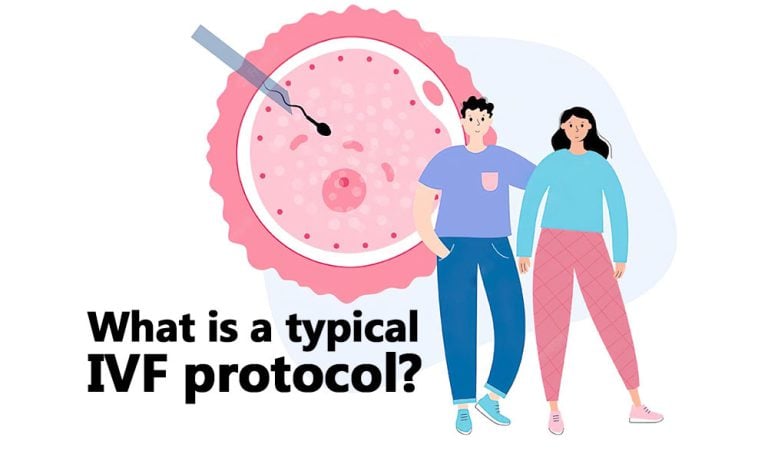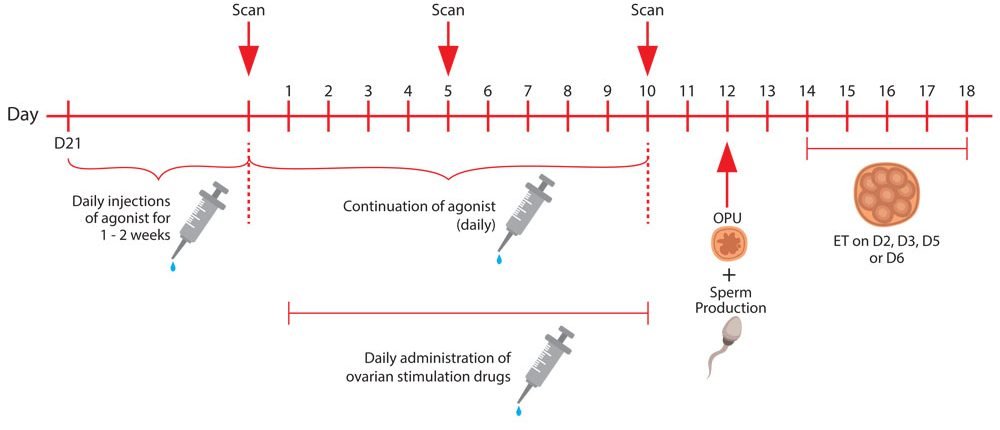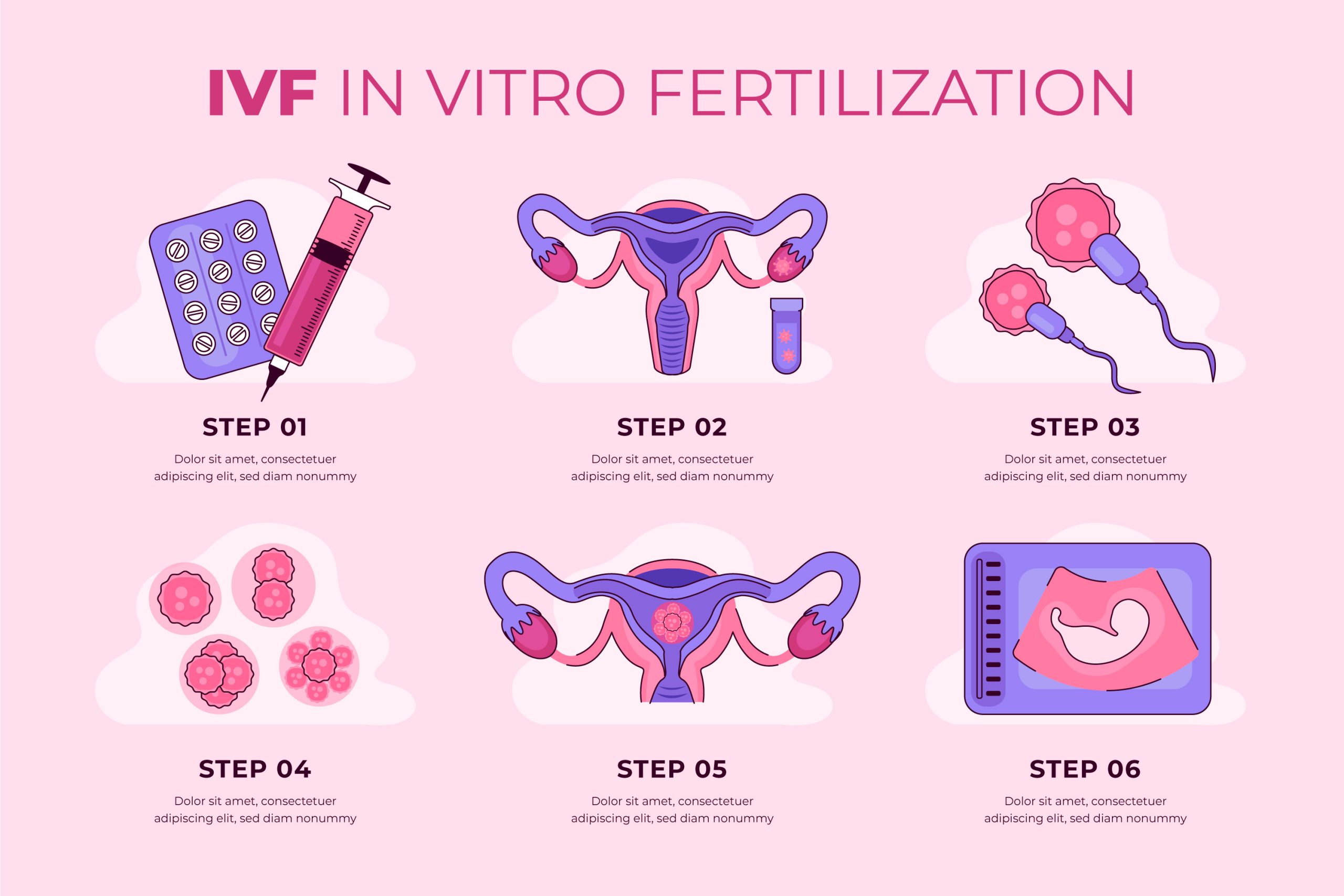
The Right to IVF Bill: Everything You Need to Know About This Game-Changing Law
April 2, 2025What Kind of Protocol Is Downregulation IVF?
Hey there! If you’re diving into the world of in vitro fertilization (IVF), you’ve probably heard the term “downregulation” thrown around. It might sound like something out of a sci-fi movie, but it’s actually a key part of some IVF journeys. So, what’s it all about? Is it right for everyone? And why does it feel like a secret no one talks about outside of doctor’s offices? Let’s break it down together in a way that’s easy to follow, packed with juicy details, and sprinkled with some real-life vibes that’ll keep you hooked.
Downregulation IVF isn’t just a random step—it’s a carefully planned protocol that can make or break your fertility journey. Whether you’re curious about the science, the side effects, or how it stacks up against other options, this article has you covered. We’ll explore the nitty-gritty, share some surprising tidbits, and even dig into the latest research to give you a fresh take that goes beyond the usual chatter. Ready? Let’s get started!
Downregulation IVF 101: What’s the Deal?
Downregulation IVF is like pressing the “pause” button on your body’s natural cycle. Imagine your ovaries are a busy factory pumping out eggs every month. In a typical IVF process, doctors want to take charge of that factory to get more eggs at once. Downregulation uses special meds to quiet things down before cranking up production. It’s part of what’s called the “long protocol” in IVF, and it’s been around for decades helping people build their families.
What Happens During Downregulation?
Here’s the basic rundown: you take a drug—usually something like Lupron (leuprolide acetate)—that tells your brain to chill out on sending hormone signals to your ovaries. This shuts down your natural menstrual cycle for a bit, almost like hitting a reset switch. Then, after a couple of weeks, doctors add other meds to kick your ovaries into high gear, producing a bunch of eggs instead of just one.
- Step 1: Start the downregulation drug (usually an injection or nasal spray) about a week before your next period.
- Step 2: Wait 2-4 weeks while your body “quiets down”—no ovulation, no surprises.
- Step 3: Begin stimulation meds to grow lots of eggs for retrieval.
Why Do It This Way?
The goal is control. By calming your hormones first, doctors can sync up your egg production perfectly for the big retrieval day. It’s like planning a party—you don’t want guests showing up at random times; you want everyone there at once! This method can boost the number of eggs you get, which ups your chances of a successful pregnancy.
Fun Fact Fans Love
Did you know downregulation mimics a mini-menopause? Yep, your body temporarily acts like it’s in a hormonal timeout—hot flashes and all! It’s not permanent, but it’s a quirky little secret that makes you wonder what else your body can do.
Who’s It For? Is Downregulation IVF Your Match?
Not everyone needs downregulation—it’s like a custom playlist, tailored to certain folks. So, who’s rocking this protocol, and why might it be their jam?
Perfect Candidates
- Endometriosis Warriors: If you’ve got endometriosis (where tissue grows outside your uterus), downregulation can help tame those wild hormones and boost IVF success. Studies show it might even improve egg quality for these patients.
- High Responders: Got polycystic ovary syndrome (PCOS) or a tendency to overproduce eggs? Downregulation keeps things from getting too crazy, avoiding risks like ovarian hyperstimulation syndrome (OHSS).
- Control Freaks (Medically Speaking): If your cycle’s unpredictable, this protocol gives doctors a blank slate to work with.
Not Your Vibe If…
- Low Egg Reserve: If your ovaries are already running low on eggs (think older age or low AMH levels), downregulation might tire them out too much. Other protocols, like “mild IVF,” might be gentler.
- Time Crunchers: It takes longer—up to 6 weeks for one cycle. If you’re in a rush, shorter options might suit you better.
Real Talk: A Patient’s Take
“I was terrified of needles, but downregulation was my ticket,” says Sarah, a 34-year-old mom from Seattle who used this protocol after years of endometriosis struggles. “It felt weird to ‘shut down’ my body, but knowing it was for a bigger purpose kept me going.”
The Science Behind It: How Does Downregulation Work?
Let’s geek out for a sec—don’t worry, I’ll keep it simple! Downregulation is all about hormones, and it’s pretty cool how it tricks your body into doing what doctors want.
The Hormone Hustle
Your brain’s pituitary gland normally sends out luteinizing hormone (LH) and follicle-stimulating hormone (FSH) to kickstart ovulation. Downregulation drugs, called GnRH agonists, flood your system with a fake version of these signals. At first, your body’s like, “Whoa, party time!” and ramps up. But then, it gets overwhelmed and shuts down the hormone factory—aka downregulation.
- Key Player: GnRH agonists (like Lupron) suppress LH and FSH.
- Result: No random egg releases, giving doctors full control.
What Research Says
A 2021 study in Frontiers in Endocrinology found that downregulation can lead to better egg numbers in women with endometriosis, with a 69% live birth rate after two cycles. Compare that to shorter protocols, and it’s a solid contender! But here’s the catch: it doesn’t always mean better egg quality, just more of them.
Analogy Time
Think of your ovaries as a garden. Downregulation is like weeding out the chaos so you can plant a big, organized crop. Without it, you might get a few wildflowers, but with it, you’re aiming for a bumper harvest.

The Ups and Downs: Pros and Cons of Downregulation IVF
Every protocol has its highs and lows, and downregulation’s no exception. Let’s weigh it out so you can see the full picture.
The Good Stuff
✔️ More Eggs, More Chances: By syncing your follicles, you often get a bigger haul—sometimes 10-15 eggs versus 1-5 with other methods.
✔️ Fewer Cancellations: No surprise ovulations mean fewer wasted cycles.
✔️ Endometriosis Edge: It’s a go-to for calming inflammation, giving your uterus a better shot at implantation.
The Not-So-Great Stuff
❌ Side Effects Galore: Hot flashes, mood swings, and headaches can hit hard—think menopause lite.
❌ Longer Timeline: 4-6 weeks feels like forever when you’re eager to start a family.
❌ Cost Bump: Extra meds and monitoring can add $1,000-$2,000 to your bill.
Table: Quick Comparison
| Aspect | Downregulation IVF | Short Protocol (Flare) |
|---|---|---|
| Cycle Length | 4-6 weeks | 2-3 weeks |
| Egg Yield | Higher (10-15) | Lower (5-10) |
| Side Effects | More intense | Milder |
| Best For | Endometriosis, PCOS | Low responders |
Pro Tip
If side effects scare you, ask your doc about splitting the dose or switching to a nasal spray. Some folks find it easier on the system!
Side Effects: What’s the Real Scoop?
Okay, let’s spill the tea—downregulation can feel like a rollercoaster. It’s not just about the eggs; it’s about how your body handles the ride.
What You Might Feel
- Hot Flashes: Like a summer day in your living room—sweaty and sudden.
- Mood Swings: One minute you’re fine, the next you’re crying over a dog commercial.
- Fatigue: Your energy might tank, leaving you napping more than usual.
- Headaches: A pesky sidekick for some.
The Secret No One Tells You
A lot of people don’t realize how emotional this phase can get. It’s not just physical—it’s a mental game too. “I didn’t expect to feel so out of control,” admits Jenna, a 29-year-old from Texas who blogged her IVF journey. “But my partner’s silly dance parties got me through it.”
Coping Hacks
- ✔️ Sip cold water or use a fan for hot flashes.
- ✔️ Journal your feelings—let it out!
- ❌ Don’t tough it out alone—tell your doc if it’s too much.
Research Nugget
A 2020 study in Reproductive Biology and Endocrinology found that 60% of women on downregulation reported mood changes, but most said it was worth it for the outcome. You’re not alone in this!
How Does It Compare? Downregulation vs. Other Protocols
Downregulation isn’t the only game in town. Let’s see how it stacks up against its IVF cousins—flare and antagonist protocols—so you can pick your fighter.
Downregulation (Long Protocol)
- Vibe: Slow and steady wins the race.
- Best For: High responders, endometriosis.
- Egg Count: High.
- Downside: Long wait, more side effects.
Flare (Short Protocol)
- Vibe: Fast and furious.
- Best For: Older women or low responders.
- How It Works: Uses the same GnRH agonist but in tiny doses to “flare” your hormones briefly before stimulation.
- Egg Count: Lower, but quicker.
- Perk: Shorter cycle (2-3 weeks).
Antagonist Protocol
- Vibe: Middle ground—flexible and modern.
- Best For: Most people, especially avoiding OHSS.
- How It Works: Uses GnRH antagonists (like Ganirelix) to block hormone surges without the shutdown phase.
- Egg Count: Moderate.
- Perk: Fewer injections, less risk of overstimulation.
What’s Trending?
Antagonist protocols are stealing the spotlight lately. Why? They’re shorter, gentler, and have similar success rates (around 40-50% per cycle, per the CDC’s 2022 data). But downregulation still holds strong for specific cases—think of it as the OG method that won’t quit.
Expert Insight
Dr. Emily Carter, a fertility specialist in Chicago, says, “Downregulation’s like the trusty old car—it gets you there reliably, but newer models might be smoother for some patients.”
The Process: Your Downregulation IVF Timeline
Wondering what a downregulation cycle looks like day-to-day? Here’s your step-by-step guide, straight from the trenches.
Step 1: Pre-Game (Day 21 of Your Cycle)
- Start Lupron injections or nasal spray, mid-luteal phase (about a week before your period).
- Goal: Suppress your natural cycle.
Step 2: Downregulation Phase (Weeks 1-2 or 3)
- Keep taking Lupron daily.
- You might feel side effects creep in—hot flashes, anyone?
- Doc checks your hormone levels (estradiol under 55 pg/ml is the sweet spot) and does an ultrasound to confirm suppression.
Step 3: Stimulation (Weeks 3-5)
- Add FSH injections (like Gonal-F) to grow those eggs.
- Regular ultrasounds and blood tests track follicle growth—aiming for 14-18mm follicles.
- Takes about 10-14 days.
Step 4: Trigger & Retrieval (Week 5-6)
- When eggs are ready, get an hCG shot to ripen them.
- 36 hours later: egg retrieval day! A quick procedure under sedation.
Step 5: Embryo Transfer
- Eggs meet sperm in the lab, grow into embryos, and 3-5 days later, one or two get transferred to your uterus.
- Freeze extras for later if you’re lucky!
Timeline Tip
Mark your calendar—downregulation alone can take 14-28 days before stimulation even starts. Patience is key!

Success Rates: Does Downregulation Deliver?
The million-dollar question: does it work? Let’s look at the numbers and what they mean for you.
By the Stats
- General IVF Success: Per the CDC (2022), about 40% of cycles lead to a live birth for women under 35.
- Downregulation Boost: Studies like one from Fertility and Sterility (2019) suggest it can push egg yields higher—up to 15 per cycle versus 8-10 with antagonists.
- Endometriosis Edge: A 2023 meta-analysis found a 5-10% higher pregnancy rate with downregulation for these patients.
What Affects It?
- Age: Under 35? You’re golden. Over 40? Success drops to 15-20%.
- Condition: PCOS or endometriosis can tweak outcomes.
- Clinic Skill: A top-notch lab matters—big time.
Real-Life Win
“My first cycle with downregulation gave me 12 eggs, and now I’ve got twins!” shares Mia, a 31-year-old from LA. “It wasn’t easy, but it worked.”
Cost Breakdown: What’s It Gonna Set You Back?
IVF isn’t cheap, and downregulation adds a layer. Let’s crunch the numbers.
Typical Costs
- Base IVF Cycle: $12,000-$15,000 (US average).
- Downregulation Meds: Lupron runs $500-$1,000 extra.
- Monitoring: More visits mean $500-$1,500 more.
- Total: $13,500-$17,500 per cycle.
Hidden Costs
- Time off work for appointments.
- Travel if your clinic’s far.
- Emotional toll (priceless, but real).
Money-Saving Tips
- ✔️ Check insurance—some states cover IVF.
- ✔️ Ask about mini-IVF if downregulation’s too pricey.
- ❌ Don’t skip consults—cheap clinics might cut corners.
Latest Research: What’s New in 2025?
Science doesn’t sleep, and neither does IVF research. Here’s what’s hot off the press as of March 23, 2025.
Shorter Downregulation?
A 2024 study in Human Reproduction tested a “shortened downregulation” approach—cutting it to 10 days instead of 21. Results? Similar egg yields, fewer side effects. Could this be the future?
Personalized Protocols
AI is stepping in! Clinics are using algorithms to tweak downregulation based on your hormone levels and past cycles. Early trials show a 7% bump in success rates.
Expert Buzz
Dr. Lisa Nguyen, a reproductive endocrinologist, notes, “We’re moving toward precision IVF—downregulation’s still key, but it’s getting smarter and kinder.”
Tips & Tricks: Making Downregulation Work for You
Ready to rock this protocol? Here’s how to ace it.
Before You Start
- ✔️ Get a hormone baseline—know your AMH and FSH.
- ✔️ Stock up on cozy socks and a heating pad—comfort is king.
- ❌ Don’t skip the prep talk with your doc—ask everything!
During the Cycle
- ✔️ Track your injections with an app—missed doses mess things up.
- ✔️ Lean on friends or a support group—IVF’s a team sport.
- ❌ Don’t Google every symptom—you’ll freak out!
After Retrieval
- ✔️ Rest up—your body’s earned it.
- ✔️ Celebrate small wins—every egg’s a victory.
Beyond the Basics: Myths, Secrets, and FAQs
Let’s bust some myths and answer the questions buzzing in your head.
Myth #1: Downregulation Ruins Your Ovaries
Nope! It’s temporary—your ovaries bounce back post-cycle.
Secret Fans Love
Some clinics use downregulation to “reset” tough cases after failed cycles. It’s like a fertility reboot!
FAQs
- Q: Can I exercise during downregulation?
A: Light stuff like yoga’s fine—skip the marathons. - Q: Does it hurt?
A: Injections sting a bit; retrieval’s under sedation—no biggie. - Q: What if I hate the side effects?
A: Talk to your doc—adjustments are possible.

Wrapping It Up: Is Downregulation IVF Your Path?
Downregulation IVF is like a backstage pass to your fertility journey—intense, controlled, and packed with potential. It’s not for everyone, but for the right person, it’s a game-changer. Whether you’re battling endometriosis, chasing more eggs, or just vibing with a long-game plan, this protocol’s got history and science on its side. Pair it with the latest tweaks—like shorter timelines or AI tweaks—and it’s still kicking in 2025.
So, what’s your next step? Chat with your doctor, weigh your options, and trust your gut. You’ve got this!
Let’s Chat!
What’s your biggest question about downregulation IVF? Drop it in the comments—I’d love to hear your thoughts! Or share your story—did this protocol work for you? Let’s keep the convo going!